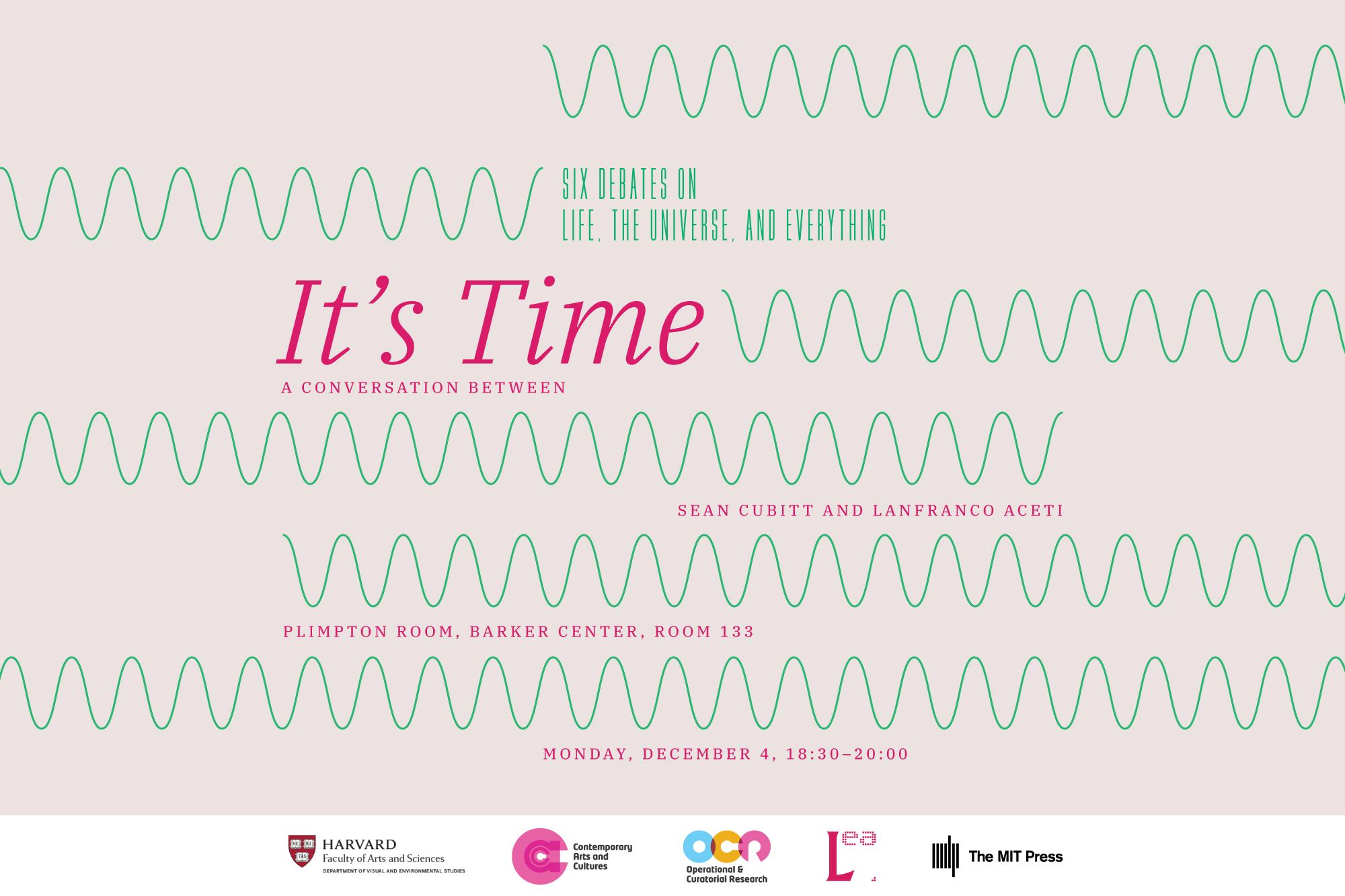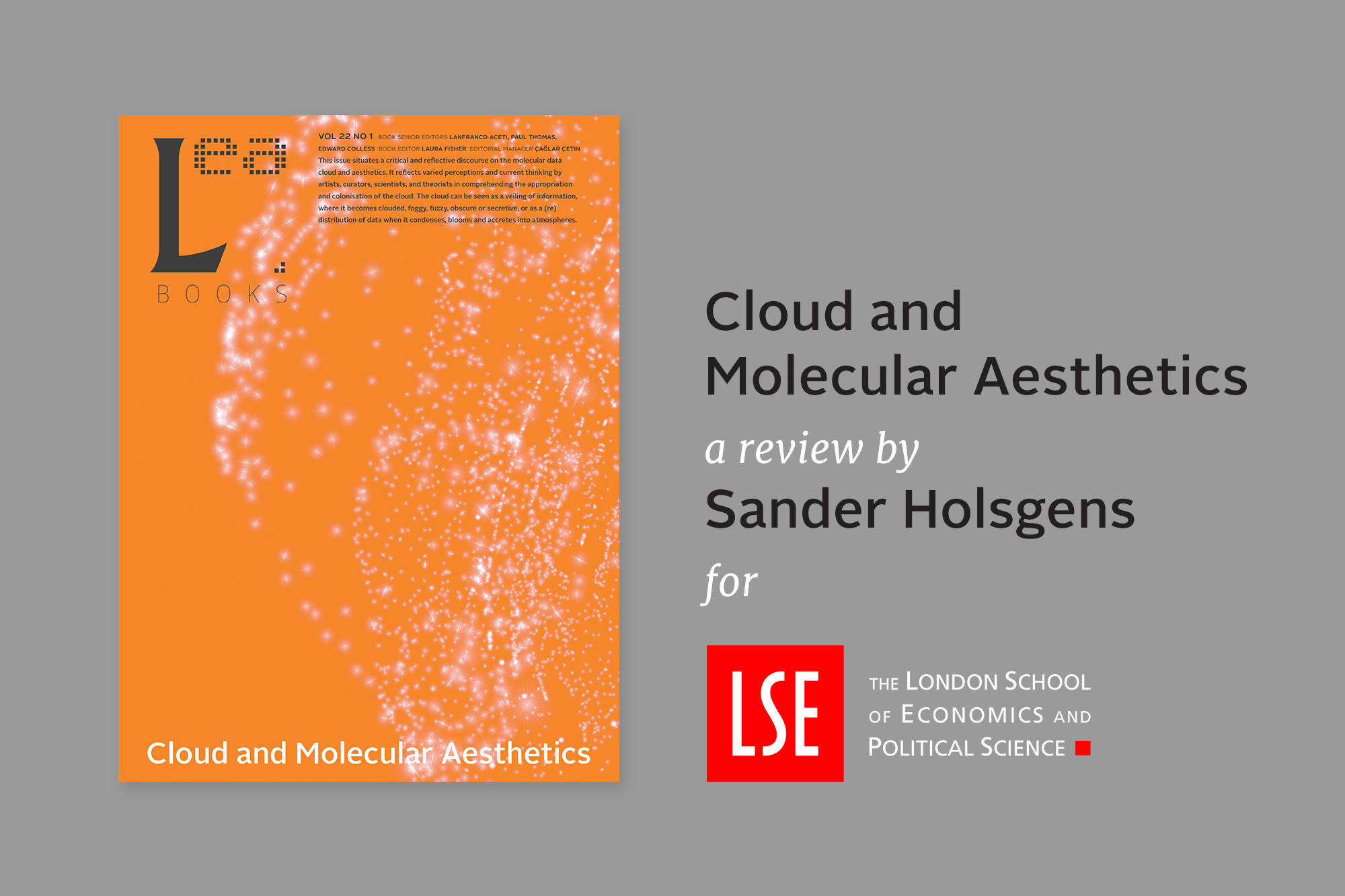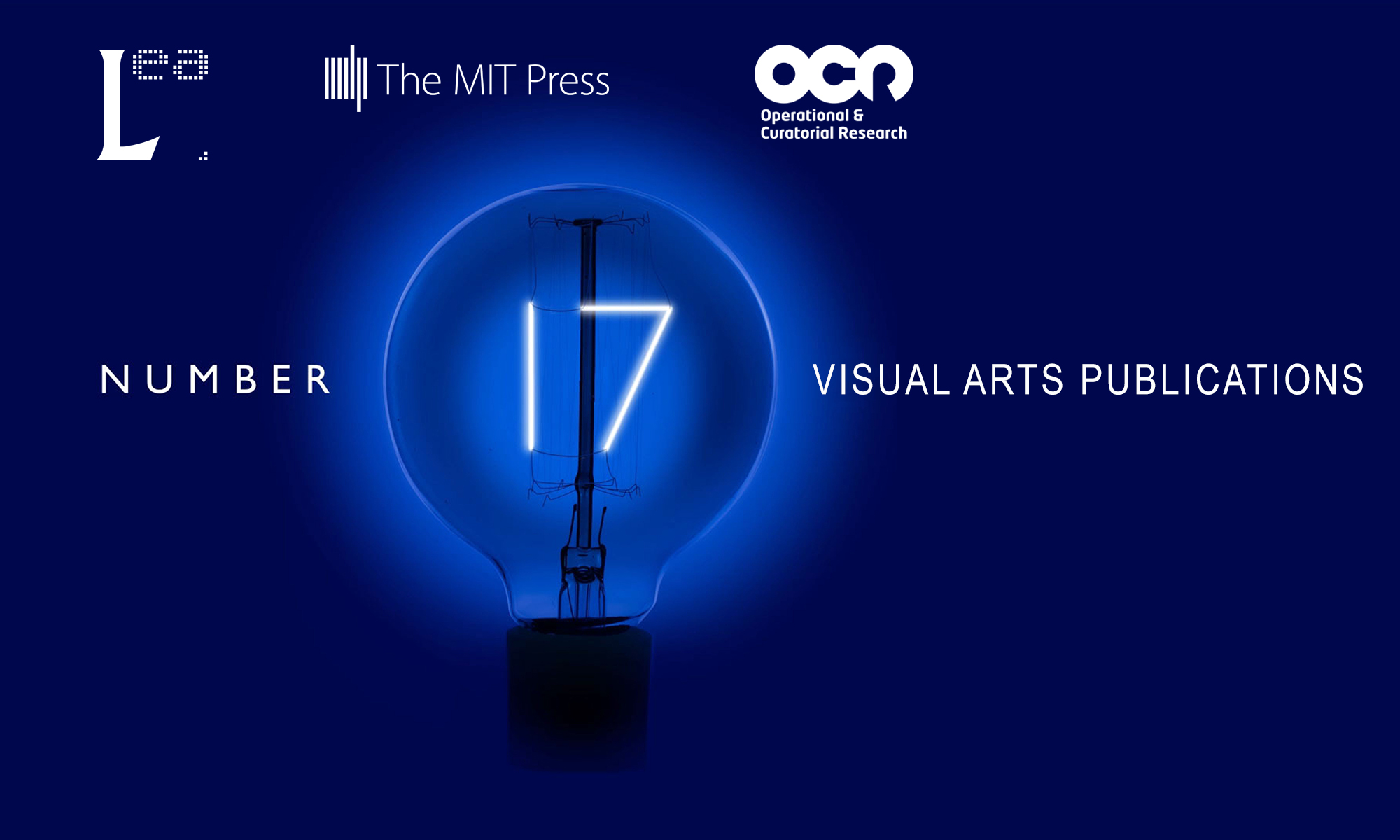Free Articles from Leonardo Journal and LMJ 2017
Submitted by Stacy Jerger on Wednesday, 12/13/2017 2:48pm
Happy Holidays from Leonardo! In every journal issue, we feature free and open access articles. Click each link to download and enjoy.

Happy Holidays from Leonardo! In every journal issue, we feature free and open access articles. Click each link to download and enjoy.


It’s Time is a conversation between Prof. Sean Cubitt (Goldsmiths and Harvard) and Prof. Lanfranco Aceti (MIT and BU) on issues of time and its relationship to the contemporary databased and mediated narratives. The lecture will take place in the Plimpton Room, Barker Center, Room 133, Harvard University on Monday, December 4, 2017, from 6:30pm to 8:00 pm.

Cloud and Molecular Aesthetics, senior editors Professor Lanfranco Aceti, Professor Paul Thomas, and Professor Edward Colless, has received a great review by Sander Hölsgens for the London School of Economics Review of Books.

Lanfranco Aceti, Visiting Professor and Research Affiliate at MIT and Director of the Arts Administraiton Program at Boston University, is delighted to announce that LEA published by MIT Press continues to rise in the academic rankings.

As a result of 50 years of publishing work on the cutting edge, Leonardo has become the leading international peer-reviewed journal on the use of contemporary science and technology in the arts and music and, increasingly, the application and influence of the arts, design and humanities on science and technology. In the United States, this phenomenon is sometimes called “STEM to STEAM.”

The following are a selection of the wishes for the future generated by audience members who attended my performances of Between the Wish and the Thing at the Boulder International Fringe Festival, August 18-26, 2017:
I wish for the earth to be more green and have more whales.
I wish that he could be free.
I wish to learn how to dance.
I wish to find the perfect hat.
I wish for you to have less worry and less pain in the body.

"When the world ended, in April 1784, the shrapnel spread far and wide. I shouldn’t have been surprised to find a piece, a BIG piece, had landed on the Djerassi property, but I was." Art in the Anthropocene Era

Even the gophers struggle
Tunnelling in dense caked dirt.
Fissures grow deeper
Widening the space between the plaques of dry brittle grass
The matter straining, stiffening,
As each molecule of water evaporates.
Paralysis holds the nutrients in place,
Greedily restraining what tries to grow.
Dig, plant, nourish,
Listen, prune then flourish.
Remember.
We need some flux
For anything to thrive.

Focusing light at the bottom of a tea cup is an every day experience, but a precise observation of the light pattern shows a very simple but singular bright curve with a clearly recognizable pattern. The lines where the light rays focus are called caustics that merge in a CUSP. The mathematical description of these types of singular curves can be found in the classification of "Catastrophes" by Mathematician René Thom.